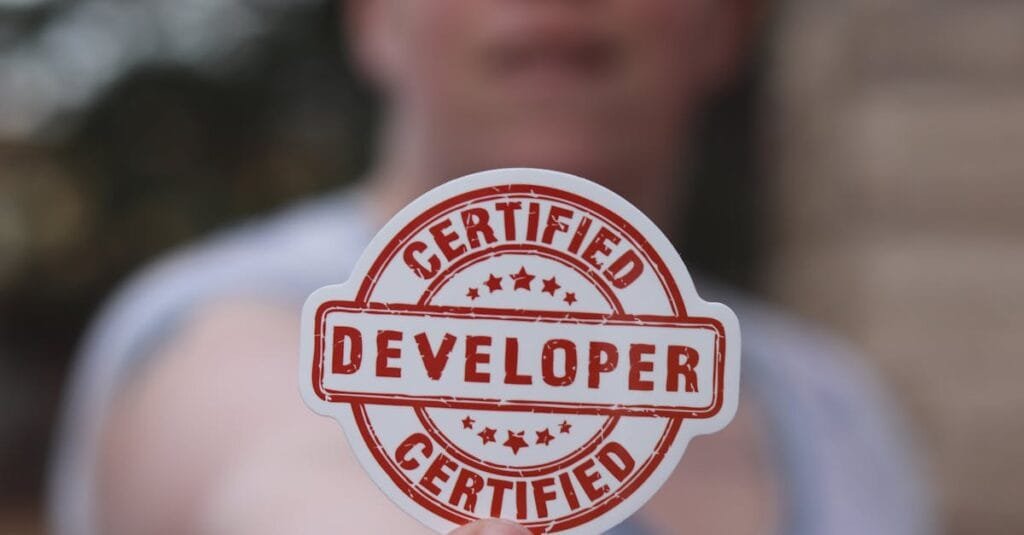Let’s be real for a second. Stepping into the AI certification world feels like trying to find your way through a maze blindfolded. You’re surrounded by terms like “AI Architect,” “Data Scientist,” “Machine Learning Engineer,” and it can get overwhelming. So, how do you sort through this chaos and pick the right path for your career? Don’t worry, we’ll unpack this together.
Understanding the AI Architect Role
The AI Architect stands out in the crowd for a reason. This role isn’t just about knowing AI; it’s about designing the frameworks and infrastructures that enable AI systems to thrive. Think of them as the architects of a high-tech building, but instead of bricks and mortar, they’re using algorithms and data.
What does an AI Architect do exactly?
- Creates AI models that fit within a larger system.
- Ensures proper data pipelines are set up and maintained.
- Collaborates with engineers and developers to build solutions.
- Addresses scalability and deployment challenges.
If you’ve got an eye for design and a knack for technical details, this might just be your calling.
Choosing Other Relevant AI Certifications
Alright, so maybe the Architect path doesn’t vibe with your style. That’s totally cool! There are a bunch of other certifications to explore. Each brings its own flavor and focus:
- Data Science Professional: Perfect for those who love diving into data analysis and predictive modeling.
- Machine Learning Engineer: If you enjoy coding and building models that learn from data, this might be your jam.
- AI/ML Specialization: A more general route that covers the basics of AI and machine learning across various domains.
Each of these paths has its merits depending on where your interests lie. Just remember, the best certification is the one that aligns with your career goals.
Where Does Shared Services Fit In?
In the shared services ecosystem, all these roles play a big part. Companies are merging AI and shared services to amp up efficiency and keep costs down. By optimizing processes with AI, organizations can streamline operations, allowing teams to focus on strategic initiatives rather than getting bogged down by repetitive tasks.
It’s more than just a buzzword; it’s a practical shift that’s transforming sectors. When shared services teams embrace AI, they’re not just adapting—they’re driving innovation.
Real Talk: The Future of AI Certifications
Now, let’s chat about the not-so-distant future. The landscape is constantly evolving. The certifications that were hot yesterday may not carry the same weight tomorrow. Here’s what I suggest:
- Stay curious. Never stop learning.
- Engage with industry communities. These networks are goldmines for advice and mentorship.
- Keep an eye on emerging trends. Look for certifications that address new technologies as they come out.
It’s a moving target, but that’s what makes it exciting! You can carve out a unique niche as the industry changes.
Getting Hands-On Experience
A certification is fantastic, but it’s not the whole picture. Get your hands dirty! Whether it’s through internships, co-ops, or personal projects, real-world experience is key. Here are some actionable ideas:
- Volunteer for AI-related projects within your current job.
- Participate in hackathons to build your tech skills faster.
- Contribute to open-source software projects to showcase your abilities.
These experiences not only boost your resume but also help you develop a network of connections that can lead you to your next opportunity.
Don’t Be Afraid to Pivot
Listen, it’s okay if you start down one path and discover it’s not what you thought. I mean, who hasn’t felt this way? Your journey in AI certifications doesn’t have to be linear. If you find your interests shifting towards data science or machine learning, take that leap. Trust me, the world won’t end; it’ll only expand!
Actionable Steps to Navigate Your Journey
Let’s tie this all together with a quick checklist to keep in mind as you navigate your certification journey:
- Identify your interests—deep dive into what excites you.
- Research certification options and align them with your career goals.
- Connect with professionals in the field to gain insights.
- Engage in hands-on projects to build your portfolio.
- Stay adaptable—be open to learning new skills and pivoting if necessary.
Remember, the AI landscape is rich with opportunities. Whether you’re eyeing the architect title or something else, there’s a path for everyone. Just keep moving forward.
Where to Learn More
If you’re keen on diving deeper into shared services and related topics, check out THEGBSEDGE blog. It’s a treasure trove of insights on topics like shared services transformation and process optimization.
As I wrap this up, just remember—you are in the driver’s seat. Navigating the AI certification landscape might seem complex, but with the right information and effort, you can find a path that not only builds your career; it also fuels your passion.


